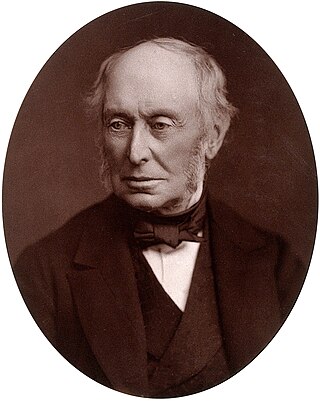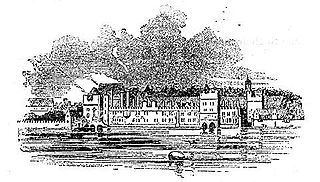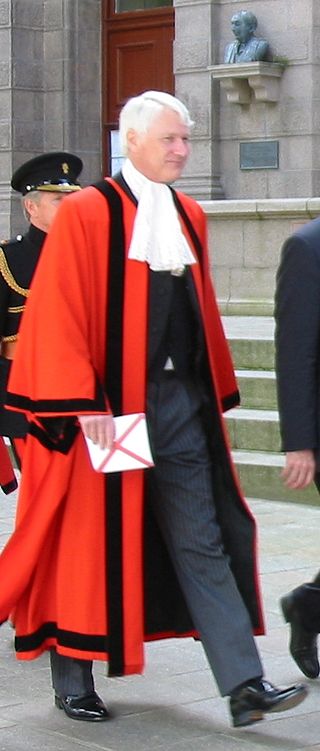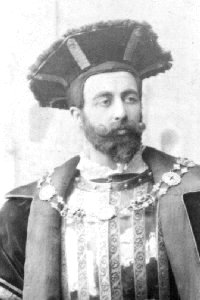Related Research Articles

William George Armstrong, 1st Baron Armstrong, was an English engineer and industrialist who founded the Armstrong Whitworth manufacturing concern on Tyneside. He was also an eminent scientist, inventor and philanthropist. In collaboration with the architect Richard Norman Shaw, he built Cragside in Northumberland, the first house in the world to be lit by hydroelectricity. He is regarded as the inventor of modern artillery.

The Savoy Palace, considered the grandest nobleman's townhouse of medieval London, was the residence of prince John of Gaunt until it was destroyed during rioting in the Peasants' Revolt of 1381. The palace was on the site of an estate given to Peter II, Count of Savoy, in the mid-13th century, which in the following century came to be controlled by Gaunt's family. It was situated between the Strand and the River Thames &ndash. The Tudor-era Savoy Chapel was located on the former estate property and carried on the name; today, the name is remembered by the Savoy Theatre and Savoy Hotel, again located on the former estate. In the locality of the palace, the administration of law was by a special jurisdiction, separate from the rest of the county of Middlesex, known as the Liberty of the Savoy. French monarch John II of France died here after an illness.

William Morgan was a Welsh Bishop of Llandaff and of St Asaph, and the translator of the first version of the whole Bible into Welsh from Greek and Hebrew.

A bailiff is a manager, overseer or custodian – a legal officer to whom some degree of authority or jurisdiction is given. Bailiffs are of various kinds and their offices and duties vary greatly.

John Shakespeare was an English businessman in Stratford-upon-Avon and the father of William Shakespeare. He was a glover and whittawer by trade. Shakespeare was elected to several municipal offices, serving as an alderman and culminating in a term as bailiff, the chief magistrate of the town council, and mayor of Stratford in 1568, before he fell on hard times for reasons unknown. His fortunes later revived and he was granted a coat of arms five years before his death, probably at the instigation and expense of his son, the actor and playwright.

The Bailiff of Jersey is the civic head of the Bailiwick of Jersey. In this role, he is not the head of government nor the head of state, but the chief justice of Jersey and presiding officer of Jersey's parliament, the States Assembly. The Bailiff is also the President of the Royal Court. It is similar in role to the Bailiff of Guernsey.

Winthrop Murray Crane was an American political figure and businessman.

William of Jülich-Cleves-Berge was a Duke of Jülich-Cleves-Berg (1539–1592). William was born in and died in Düsseldorf. He was the only son of John III, Duke of Jülich-Cleves-Berg, and Maria, Duchess of Jülich-Berg. William took over rule of his father's estates upon his death in 1539. Despite his mother having lived until 1543, William also became the Duke of Berg and Jülich and the Count of Ravensberg.

Sir Richard Cholmondeley was an English farmer and soldier, who served as Lieutenant of the Tower of London from 1513 to 1520 during the reign of Henry VIII. He is remembered because of his tomb at the Tower of London and because he is fictionalized as a character in Gilbert and Sullivan's darkly comic opera, The Yeomen of the Guard. Cholmeley's name has frequently been misspelled "Cholmondeley" because of its misspelling in the plaque on his tomb, which led to the misspelling of the character's name in the opera; other branches of Cholmeley's family use the longer spelling.
A water bailiff is a law-enforcement officer responsible for the policing of bodies of water, such as a river, lake or coast. The position has existed in many jurisdictions throughout history.

Bayworth is a hamlet in the civil parish of Sunningwell about 3 miles (5 km) south of Oxford. Bayworth was part of Berkshire until the 1974 boundary changes transferred it to Oxfordshire.
Sir William Whorwood was a landowner in Staffordshire and the neighbouring counties, a distinguished lawyer, and a politician in the reign of Henry VIII. He achieved the positions of Solicitor General and Attorney General.

Sir Gilbert Gerard was a prominent lawyer, politician, and landowner of the Tudor period. He was returned six times as a member of the English parliament for four different constituencies. He was Attorney-General for more than twenty years during the reign of Elizabeth I, as well as vice-chancellor of the Duchy of Lancaster, and later served as Master of the Rolls. He acquired large estates, mainly in Lancashire and Staffordshire.

Sir Brian Tuke was the secretary of Henry VIII and Cardinal Wolsey. He became treasurer of the household.
Nicholas Brigham, is mentioned by Bale as a Latin scholar and antiquarian, who gave up literature to practise in the law courts, and who flourished in 1550. To this Pits adds that he was no common poet and a good orator, and that in 1555 he built a tomb for the bones of Geoffrey Chaucer in Westminster Abbey. Later writers have taken this to be Nicholas Brigham, a "teller" of the exchequer, who died in 1558.
William Franklyn (1460–1556) was an English churchman, who became dean of Windsor.
Lieutenant Admiral Sir William Woodhouse was an English naval commander and administrator who rose to the rank of Lieutenant of the Admiralty and was head of the Council of the Marine later called the Navy Board. He also served as a Member of Parliament of the Parliament of England from 1545 to 1564. He was prominent during an important time of the Navy Royal's development in the later half of the Tudor period.
William Pye was Dean of Chichester from 1553–1557, a Canon of Westminster from 1554–1556, and a Canon of Windsor in 1557.
William Ermested was a Canon of Windsor from 1554 – 1558 and Master of the Temple.
The Master of the Children of the Chapel Royal was the choirmaster of the Chapel Royal of England. They were responsible for the musical direction of the choir, which consisted of the Gentlemen of the Chapel and Children of the Chapel. In some periods regarded as the most prestigious choral directorship in the country, the holder was given power to take boys into service from the leading cathedral choirs.
References
- 1 2 3 W. H. Grattan Flood (1919). "New Light on Early Tudor Composers. IV. - William Crane". The Musical Times. 60 (922): 682+691–692. doi:10.2307/3701930. JSTOR 3701930.
- ↑ Ross W. Duffin (2018). Some Other Note: The Lost Songs of English Renaissance Comedy. Oxford University Press. p. 103. ISBN 9780190856601.